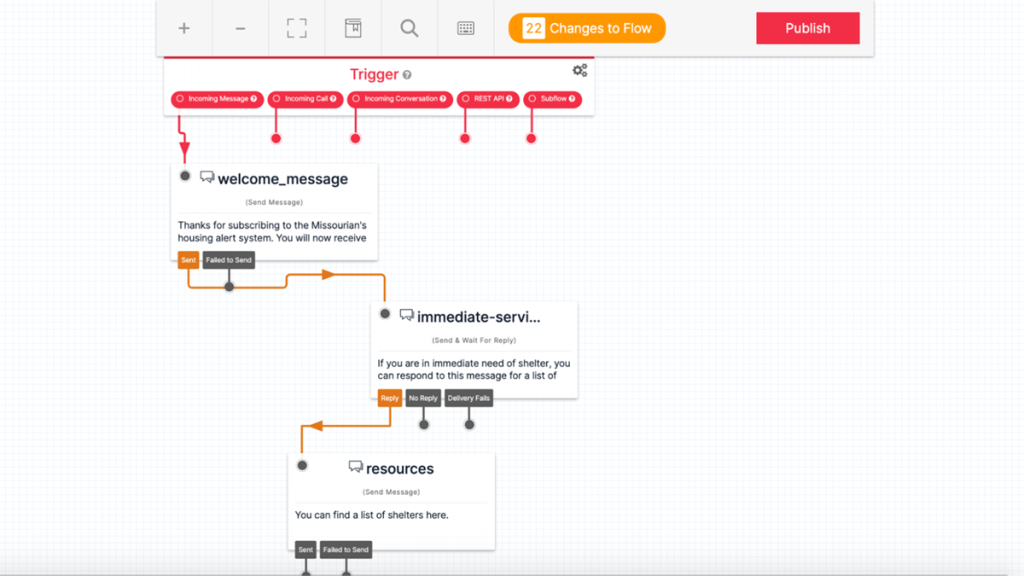
A flow chart shows the pattern of initial automated messages that a new subscriber to The Missourian’s housing SMS outreach would receive.
Creating an affordable text system for your community centered newsroom
SMS systems are often expensive, pay per a text plans can make it affordable
As part of an ongoing effort to broaden the impact of their coverage, many newsrooms are trying text messaging communication to more directly speak with audience members who can benefit from receiving the news.
The Philadelphia Inquirer is among the outlets that have developed text programs for elections. Enlace Latino NC, a Spanish-language news organization in North Carolina, uses WhatsApp to reach Spanish-speakers. Outlier Media used primarily automated texts to help low-income residents in Detroit find data and records about landlords and property maintenance.
Platforms like GroundSource provide an established way for newsrooms to send SMS alerts and outreach, but costs — $1,000 for onboarding and starting at $100 per month for usage — can be prohibitive for smaller outlets. (GroundSource does provide some need-based discounts).
A more affordable text service like Twilio that offers a per-message rate allows outlets with smaller distribution lists to keep costs low. A texting number, which can be a local area code, costs $1 a month through Twilio. The exact cost of sending or receiving a text varies slightly based on the recipient’s phone carrier, but is generally a little more than a cent. Sending 400 messages and receiving 50 messages costs about $5.50 a month.
These were attractive factors for the Columbia Missourian as we helped them develop a text outreach system for increasing coverage of housing and homelessness.
Our experiment with Twilio
The texts are written to provide necessary information — as opposed to trying to generate a site visit — though links to supplemental content can be sent.
The Missourian’s staff engaged with community members — including city officials, organization leaders and people experiencing homelessness — to solicit their opinions about how to make this text service useful.
In those conversations, reporters asked:
- What platforms does our target audience already use?
- What topics would lead to helpful content?
Within our newsroom, staff similarly focused on how to write and send messages with the following questions:
- What parts of the text service should be automated?
- Does The Missourian need to develop style guidelines for how to write the text messages?
- How can the team keep costs and workload low?
Through these conversations, the newsroom learned that our community felt it would be important to deliver alerts over both SMS and a WiFi text program. We also developed a list of topics in The Missourian’s news coverage to distribute information about, with the assumption that it would change and grow over time beyond this particular project.
Their messages can be received via both SMS and WhatsApp now and allow those who’ve signed up to contact newsroom staff through the same system.
Here are the information topics that our SMS messages provided:
- When a cold-weather-only warming shelter is open
- Where other warming shelters are located
- How bus routes are changing
- Storm, heat and other weather warnings
- Announcements of job fairs and similar events
- News regarding housing vouchers
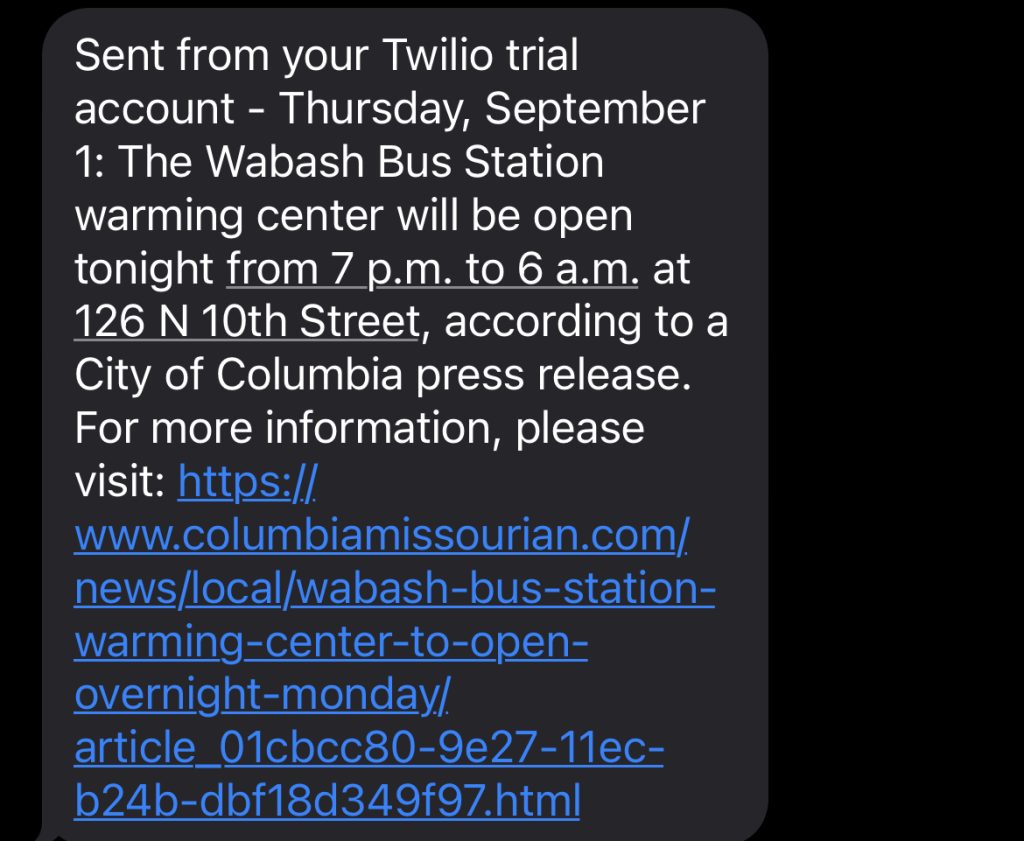
How to develop your design
For the Missourian, a pay-as-you-go structure is beneficial because of a smaller audience — it has a print circulation of about 5,000. For that Twilio is ideal because of its options to send over both SMS and WhatsApp, automation capabilities and rates — each message costs a fraction of a cent.
No coding is required, though it is a possible approach if you wish to code in speciality features.
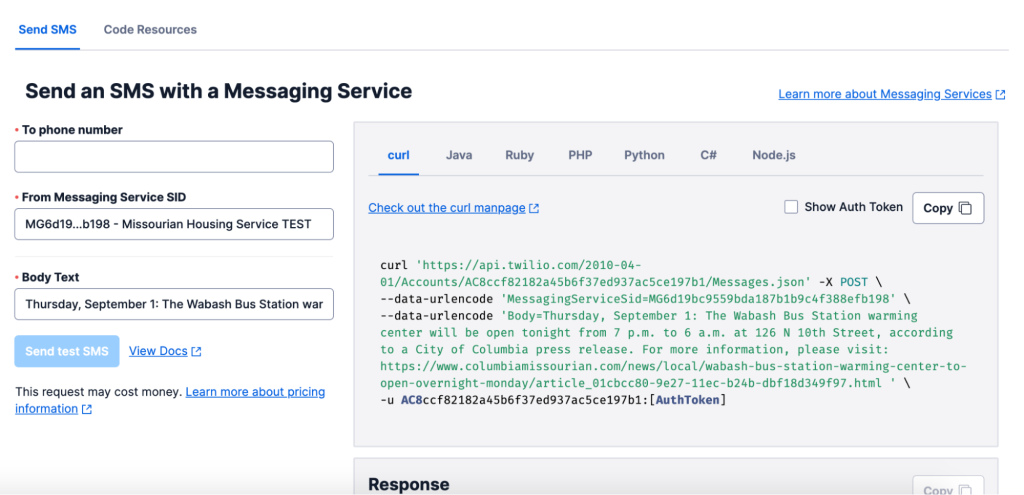
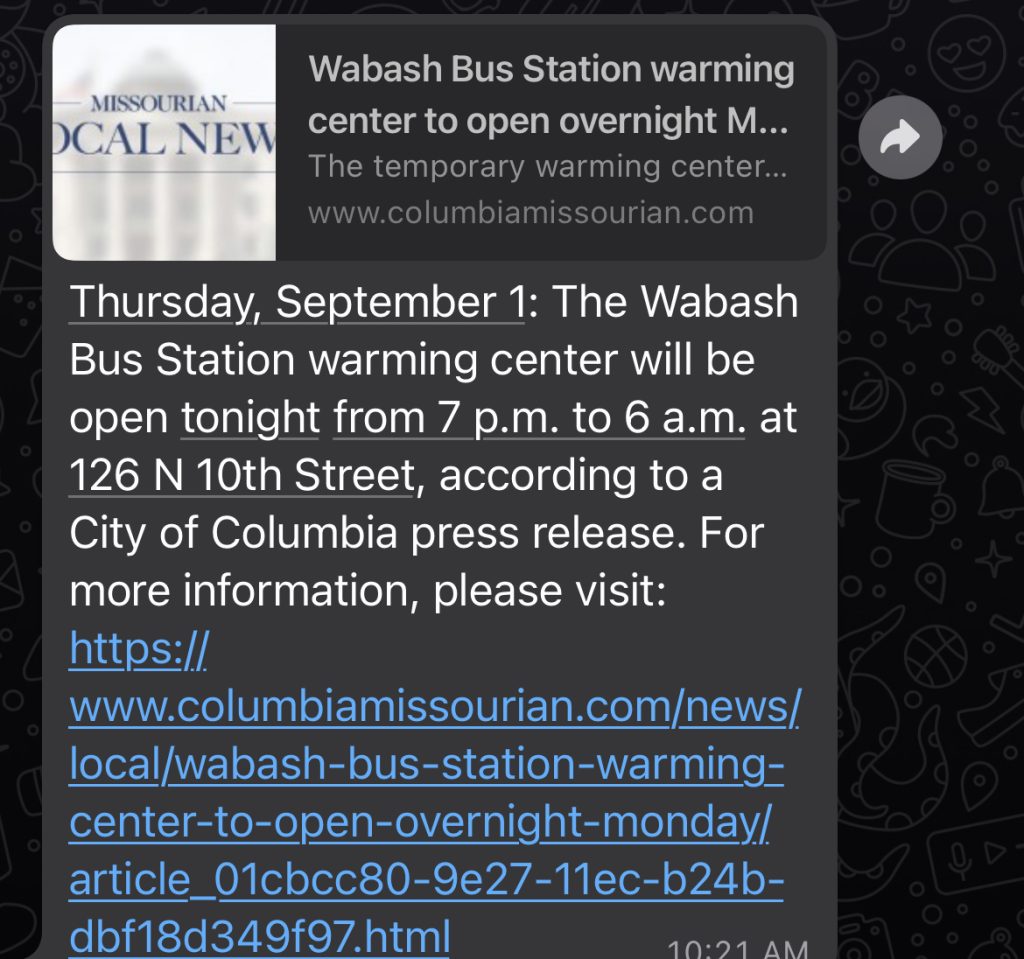
Recipients can also reply to messages:
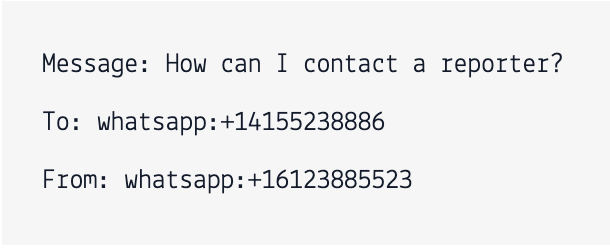
Creating a simple, automated series of introductory messages is straightforward. When the initial programmed message is successfully sent, another message follows with the option to receive an immediate list of local shelters and their policies (like hours, sleeping arrangements, whether coming and going is allowed.)
If the subscriber doesn’t respond to the second message, nothing else happens. If they do reply — it doesn’t matter what they say in the response — they receive a third message with a link to shelter resources. This type of chatbot flow is simple, with only two possible paths the conversation can go, but more information and variables can be added in Twilio at any time.

A flow chart shows the pattern of initial automated messages that a new subscriber will receive, starting with a welcome message and concluding with a list of resources if they respond to a follow-up message offering them.
Key takeaways for newsrooms who want to try a texting initiative
- The value of community input cannot be overstated. Getting feedback on ideas for topics and implementing a text system — will help make SMS systems as useful as possible to those you’re serving.
- SMS is an interactive system that will require regular changes and adjustments to find what works for your community and to relay new information. Flexibility and feedback will be key.
This article has been edited by Mikaela Rodenbaugh and Kat Duncan.

Comments